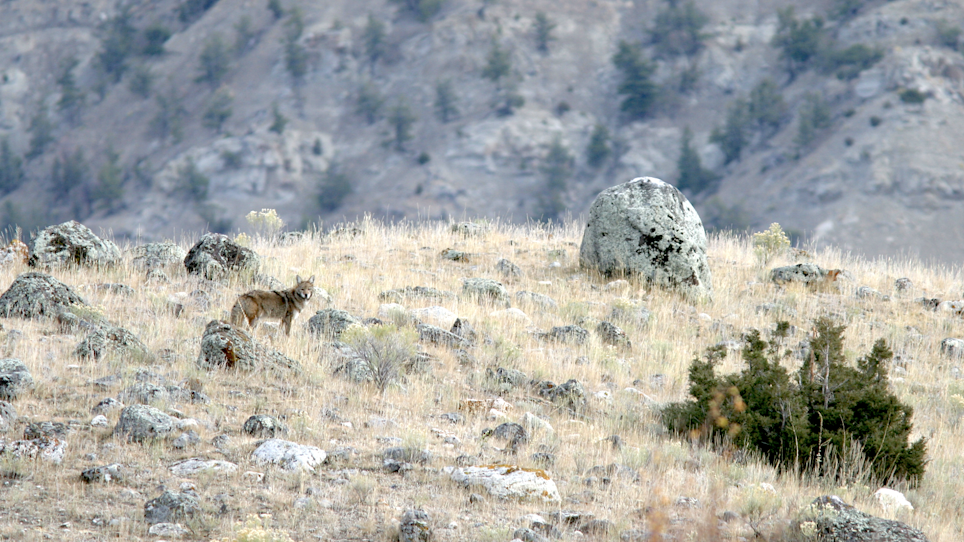Everyone hates to give up. Nevertheless, there are some clues you should consider while coyote hunting that maybe another location or even another day may be a better solution than the current situation.
Here are a few clues that could be telling you to try again at another time or place.
The Runaway Coyote
It usually takes time and labor to get to a calling location, but occasionally along the way, either in your vehicle or on foot, you bump a coyote. Seeing a coyote running away from an area you hoped to call isn’t necessarily a reason to give up, but do the math.
In areas of high coyote density seeing one coyote leave an area probably isn’t a reason to give up and head another compass direction. The possibility of another coyote showing up from another bearing is likely. But if you hunt areas where coyote numbers are scattered and calling success is already below average, you may want to pick another locale.
You may have just spooked the only coyote within hearing distance and it could have a friend in the backdrop that joined in the retreat. Plus, they may stop within hearing distance. Any calls from where they just sensed danger could educate them further. Coming back another day with a veiled approach could be the successful answer.
Human Hustle and Bustle
During a recent morning of coyote hunting my second set was interrupted by an impromptu cattle roundup in the distance. After the ATVs and cows disappeared over the horizon I waited a few minutes and then commenced to calling. I already had a hunch my calls would fall on deaf ears, but I had hiked a long way in so why not?
Coyotes don’t always flee from the hustle and bustle of humans, but often they’ll put distance between the commotion. If you near your calling destination and see activities unusual for the area, you may want to steer to another location. Coyotes already could be leaving, thus reducing your calling success.
One activity I’ve seen that doesn’t always scare coyotes — and sometimes attracts them — is cattle feeding. Coyotes may see it as a daily routine or are waiting to slip in for a few nibbles of grain. Regardless, I’ve had good success calling near these feeding operations in the past.
Neighbor's Barking Dog
Sometimes you get to a location with confidence and begin calling, only to have a distant coyote begin a relentless sequence of barking. Barking generally means a coyote is suspicious.
A combination of barks and howls also could signal a questioning attitude from the coyote. It’s not a guarantee, but oftentimes a barking response means the game is over. A coyote could have seen your form advancing from afar or it simply may consider your sounds to be questionable.
You have two choices in this situation. First, you can slip away and come back another day. Second, you can begin mimicking the barking to sound like another coyote also questioning “What’s up?” If the barking seems more curious than aggressive, why not bark back before you leave? Wait at least 30 minutes or more for any cautious coyote to peek for an answer.
Weather the Weather!
Lastly, you’ve heard the expression wait 10 minutes and the weather will change. Unexpected weather such as gale winds or driving moisture can make your calls as ineffective as Congress.
In open country it almost guarantees low success. Abandon areas that won’t allow your calls to carry and either schedule a return later, or dive into cover that coyotes may also be seeking for weather relief. Coulees, canyons and bottomlands all provide protection and your calls may reach eager ears if the Weather Channel isn’t doing a special on the event.






